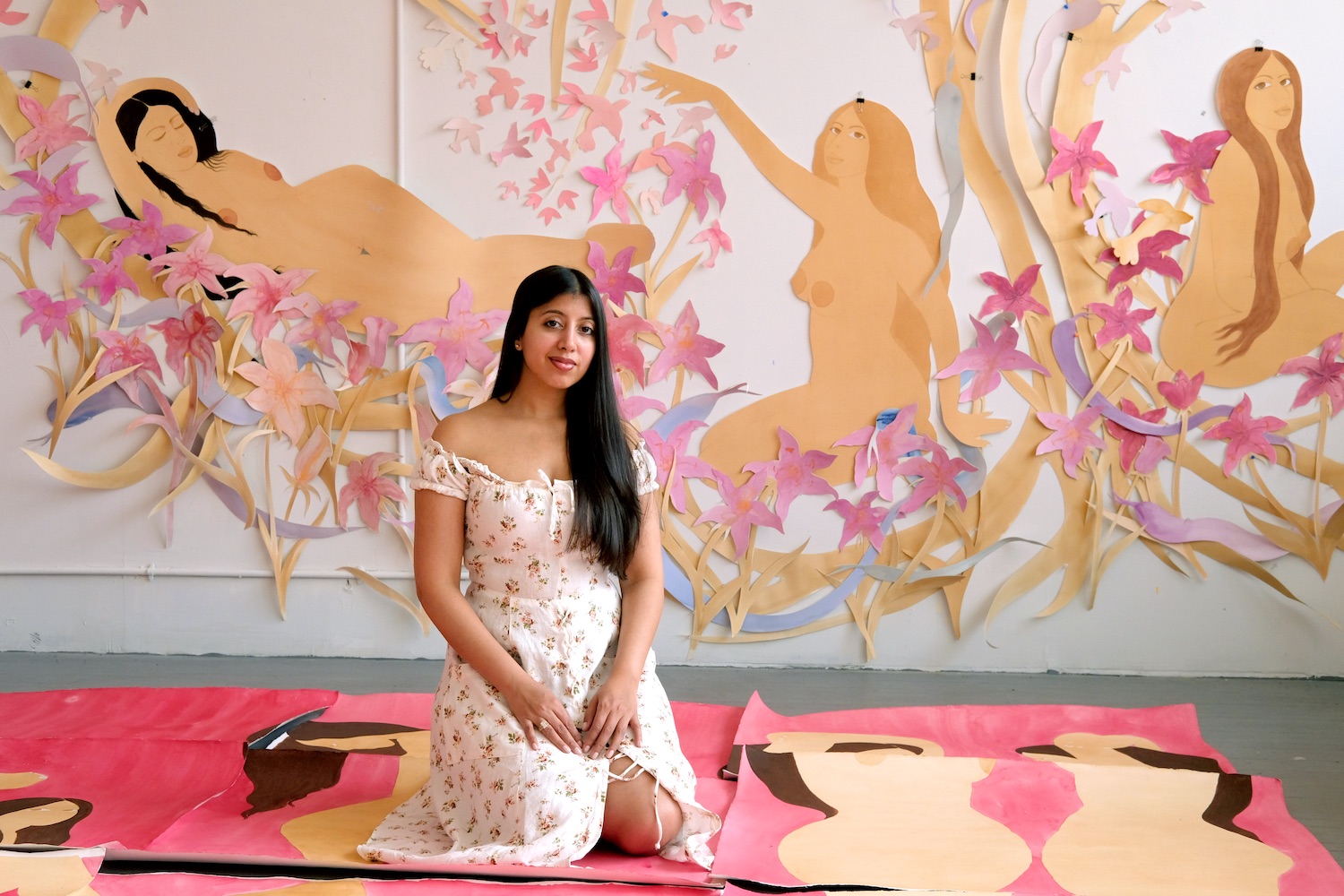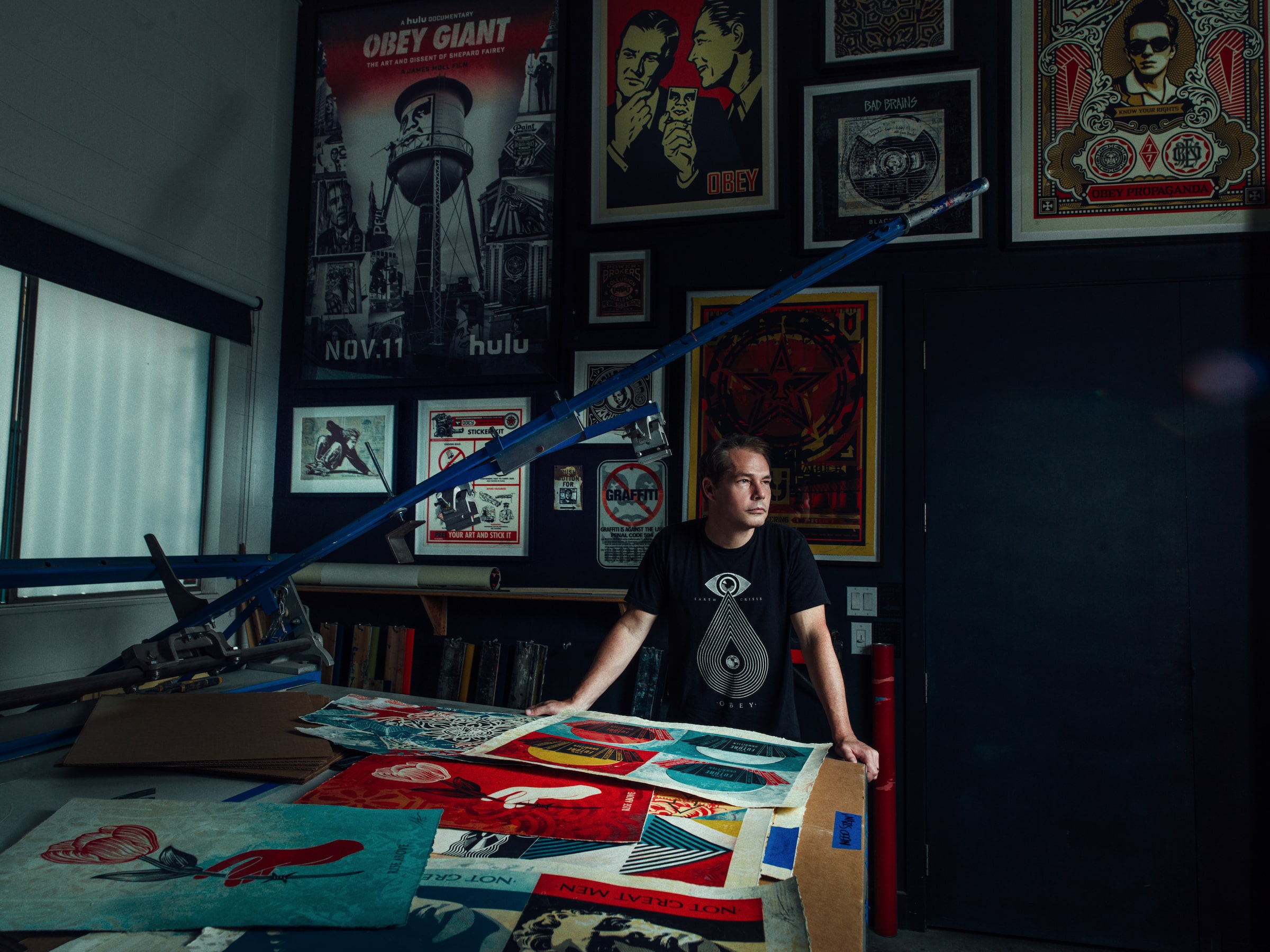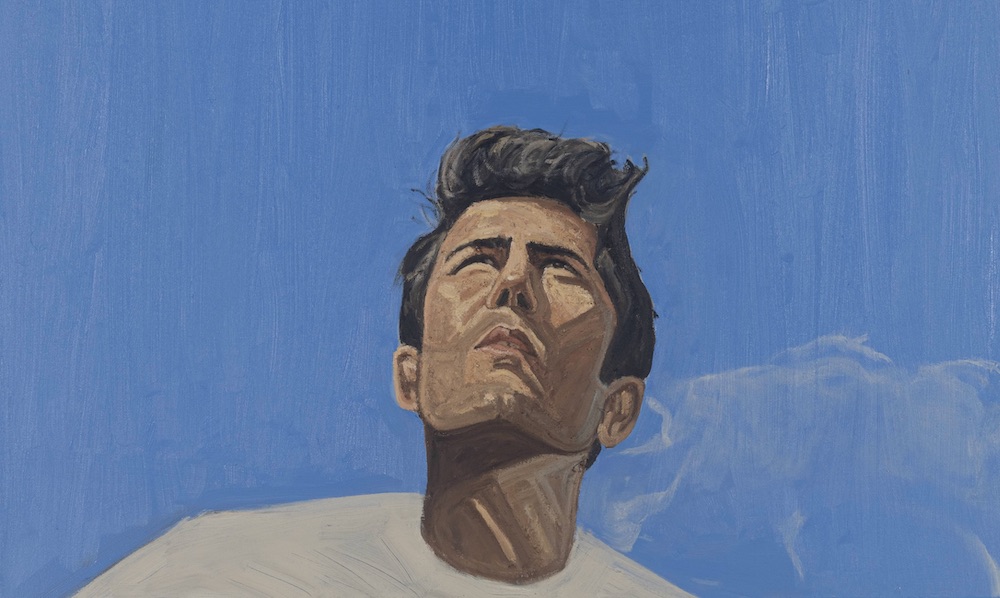Many of us have become accustomed to viewing exhibitions online since the Coronavirus quarantine began, but as we near the five-month mark of some sort of physical isolation, there is a huge desire to get out to see art in New York. To feed this eagerness to experience art in real life, New York-based Art Production Fund has just unveiled a major public exhibition by artist Ryan Flores as part of their ongoing exhibition program, Art in Focus.
Flores, who primarily works with ceramics, has created a remarkable group of new works currently on display throughout the Rockefeller Center campus in midtown. The expansive and alluring presentation includes several intricately organized window displays adorned with Flores’ vibrant sculptures, as well as photography. Bridging art history and consumerism through his incisive approach to creating still lifes within the context of commercial displays, this show demonstrates the power of seeing art in person and is a must-see for those who are masked and ready to explore the city.
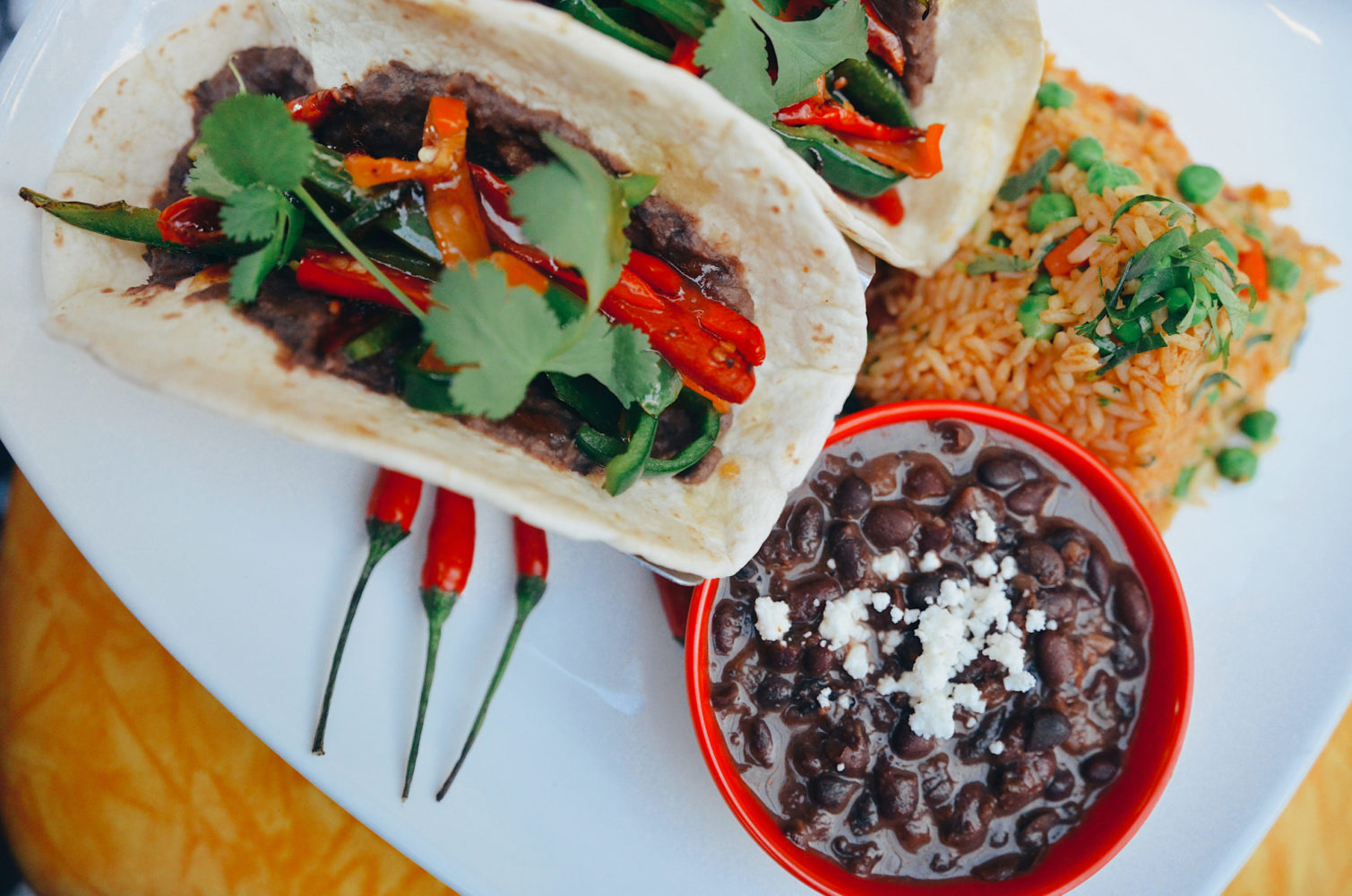
Photo by Adriana Herrera, courtesy of Uno Mas.
Flores spoke with Whitewall about his process, and how the exhibition came about.
WHITEWALL: How did this project come about?
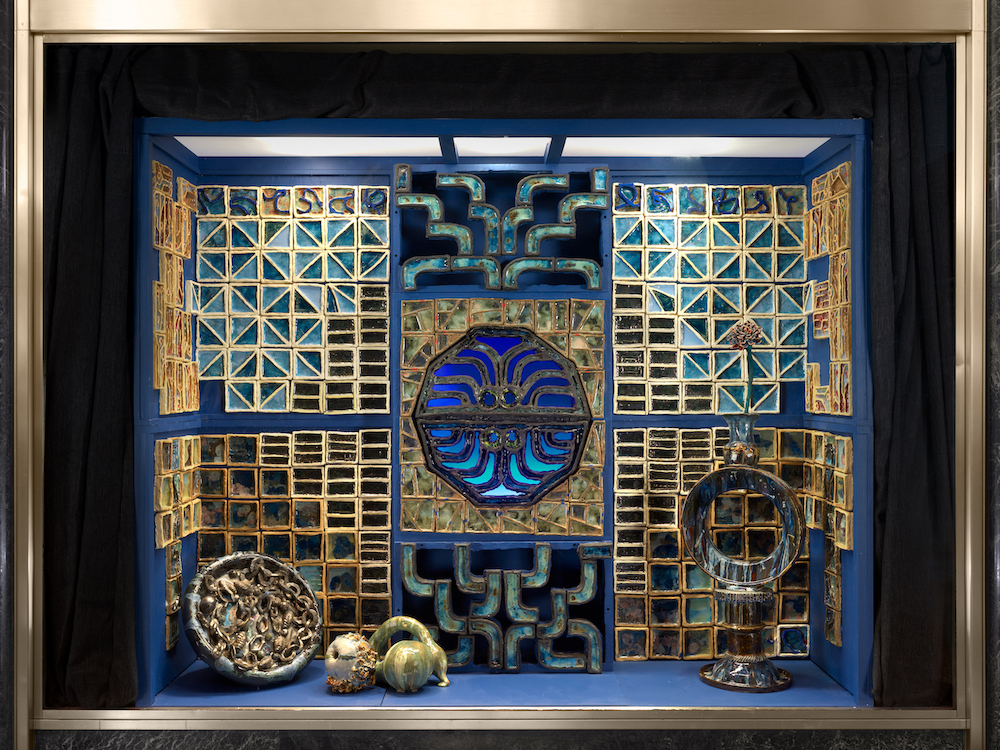
Photo by Dan Bradica, courtesy of Art Production Fund.
RYAN FLORES: APF reached out to me and asked me to do a proposal for the Art in Focus program in early December. I was really excited about working throughout the entire Rockefeller Center campus, particularly the vitrine spaces at 45 Rock Lobby. The space is dreamy with its high ceilings, mirrored marble, and the glow of, Light and Movement, the permanent installation by Michio Ihara.
I had recently started exploring creating architectural sculptures using ceramic tiles in 2019. I created a site-specific installation at Yeh Art Gallery in Queens. The space had vitrine display cases that lined the hallway to the entrance of the gallery. I was drawn to them and thought it was a great way to try something new within my work. This is where I started to develop working with ceramic tiles.
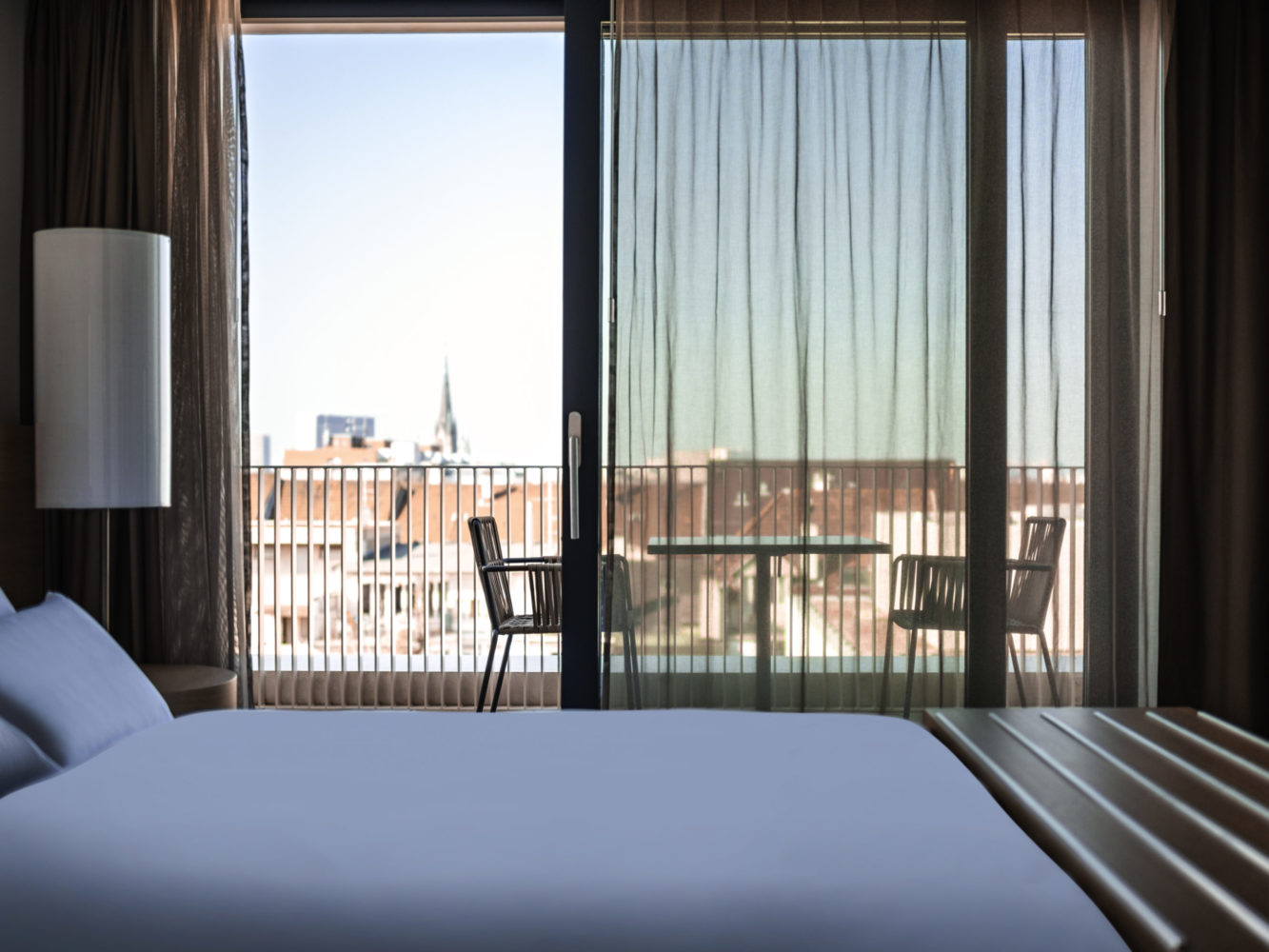
Courtesy of Hotel Wettstein.
I felt this recent exploration in architectural spaces would fit well in the vitrine spaces at 45 Rock Lobby and the proposal was accepted. I immediately started working and considered all the aspects of the space: its location, history, and surroundings.
Art Deco, the style of lobby, has always been a favorite of mine. I feel there is definitely an evident influence of Art Deco in the final installation in the vitrine spaces.
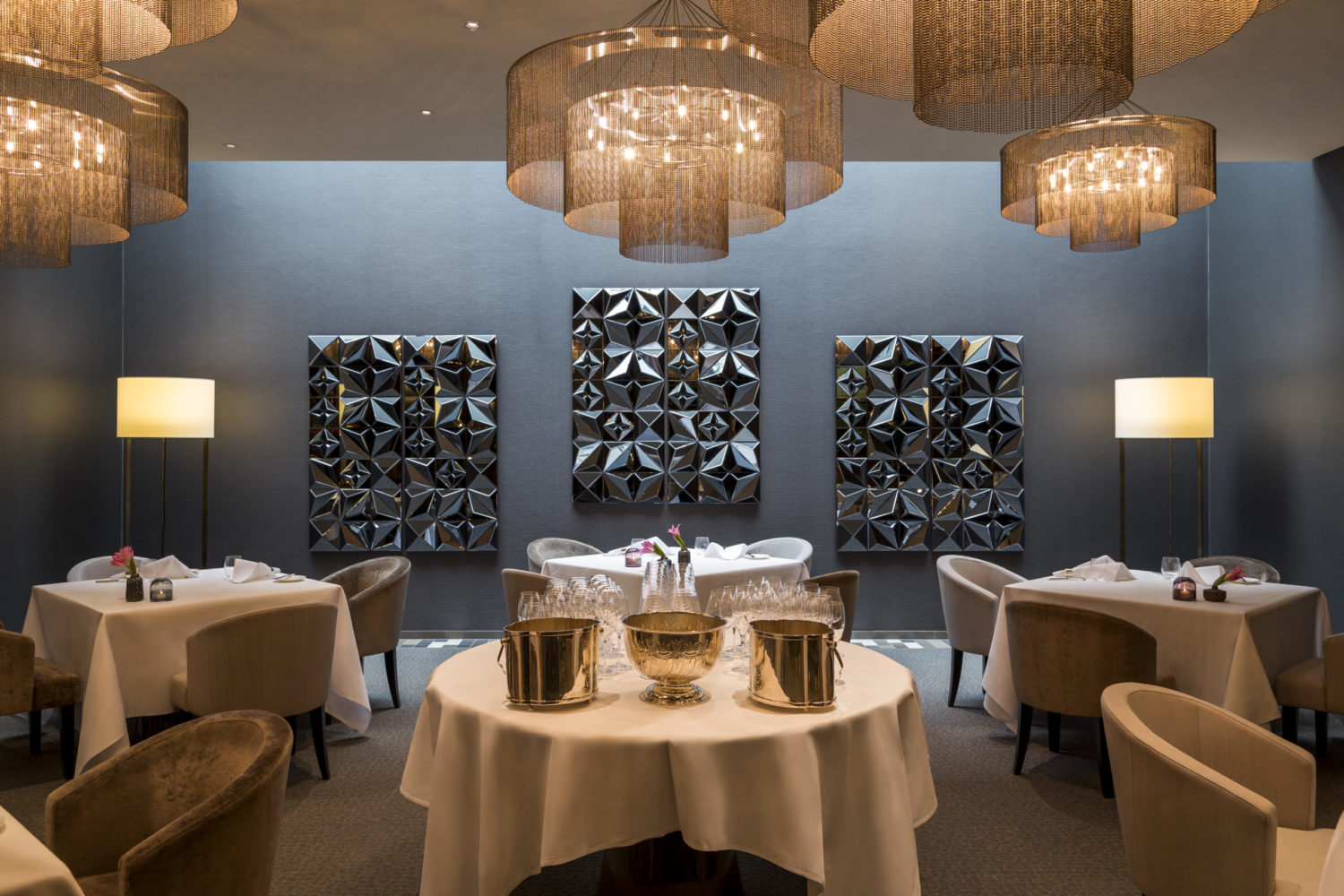
Courtesy of Hotel Wettstein.
The mural spaces at the beginning presented more of a challenge with the amount of spaces, and the scale of each. The process of ceramics is very time consuming, and the objects I create are usually smaller to-scale fruit objects. My works are all sculptural and I was being asked to present in a two-dimensional space. I had also wanted to experiment with colored light and colored backgrounds to accentuate the ceramic sculptures.
WW: Can you talk about your ceramic-making process?
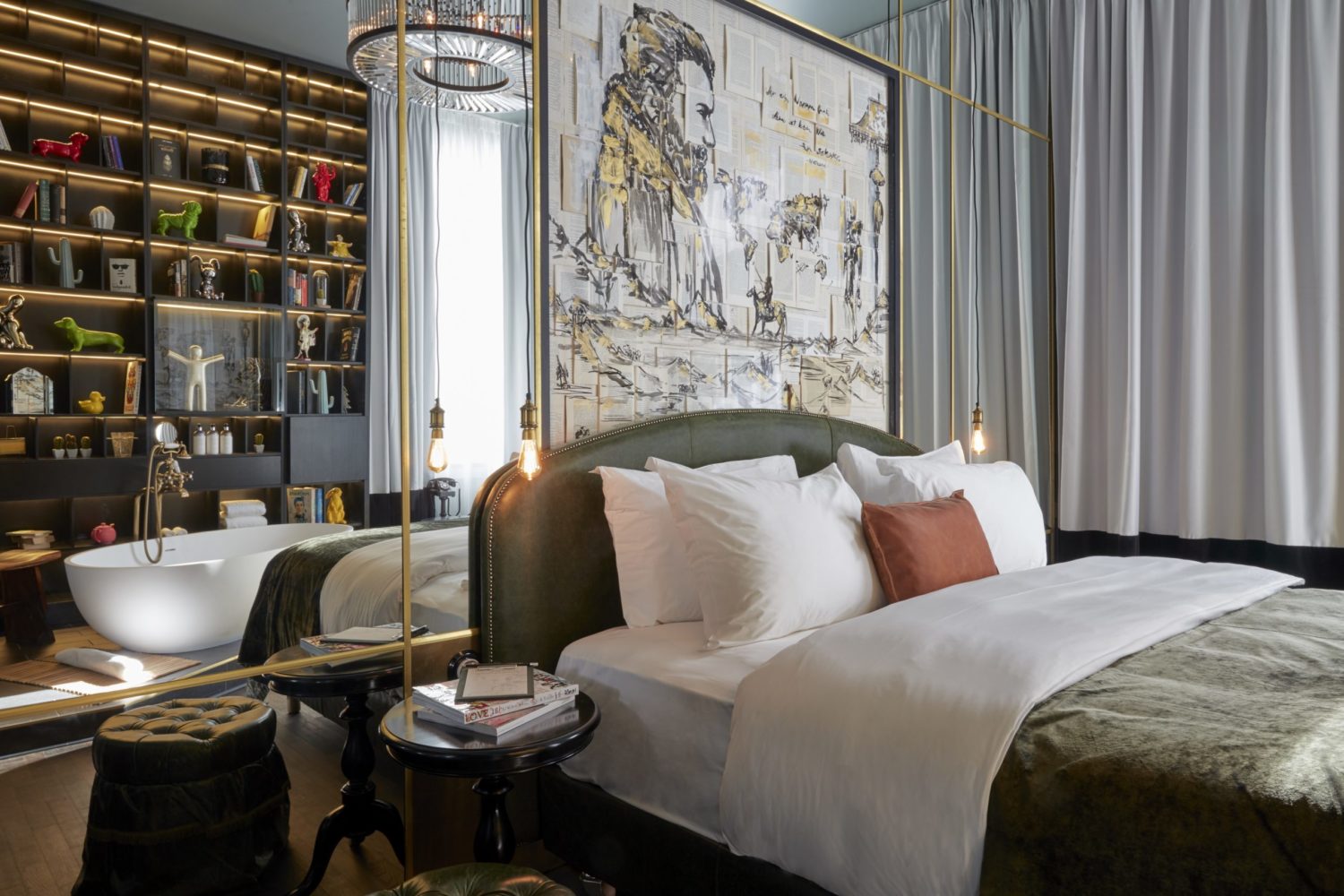
Photo by Steve Herud, courtesy of The Sir Savigny Hotel Berlin.
RF: My process of ceramic making is mainly handbuilding; meaning all the forms made of clay are sculpted by hand. The work is then fired (a process to harden the clay) in a kiln. Everything inside the kiln is stacked on top of each other to fill every inch of the 28-inch by 28-inch barrel.
The next step is glazing- this is where the surface quality and color are developed. Honestly, this is where my focus lies and it has been for most of my recent work. It’s where the element of play is currently. Through layering and multiple firings, I’ve been able to develop deep rich surfaces of color and texture. I do this to create glaze combinations where the colors bleed into each other and run over the form. You could do anything with glaze and because there are so many factors that can change your outcome, such as application and the number of firings—you can get a great number of variations in your results. I rarely write down the combinations and just go off of memory. It allows for nice surprises.
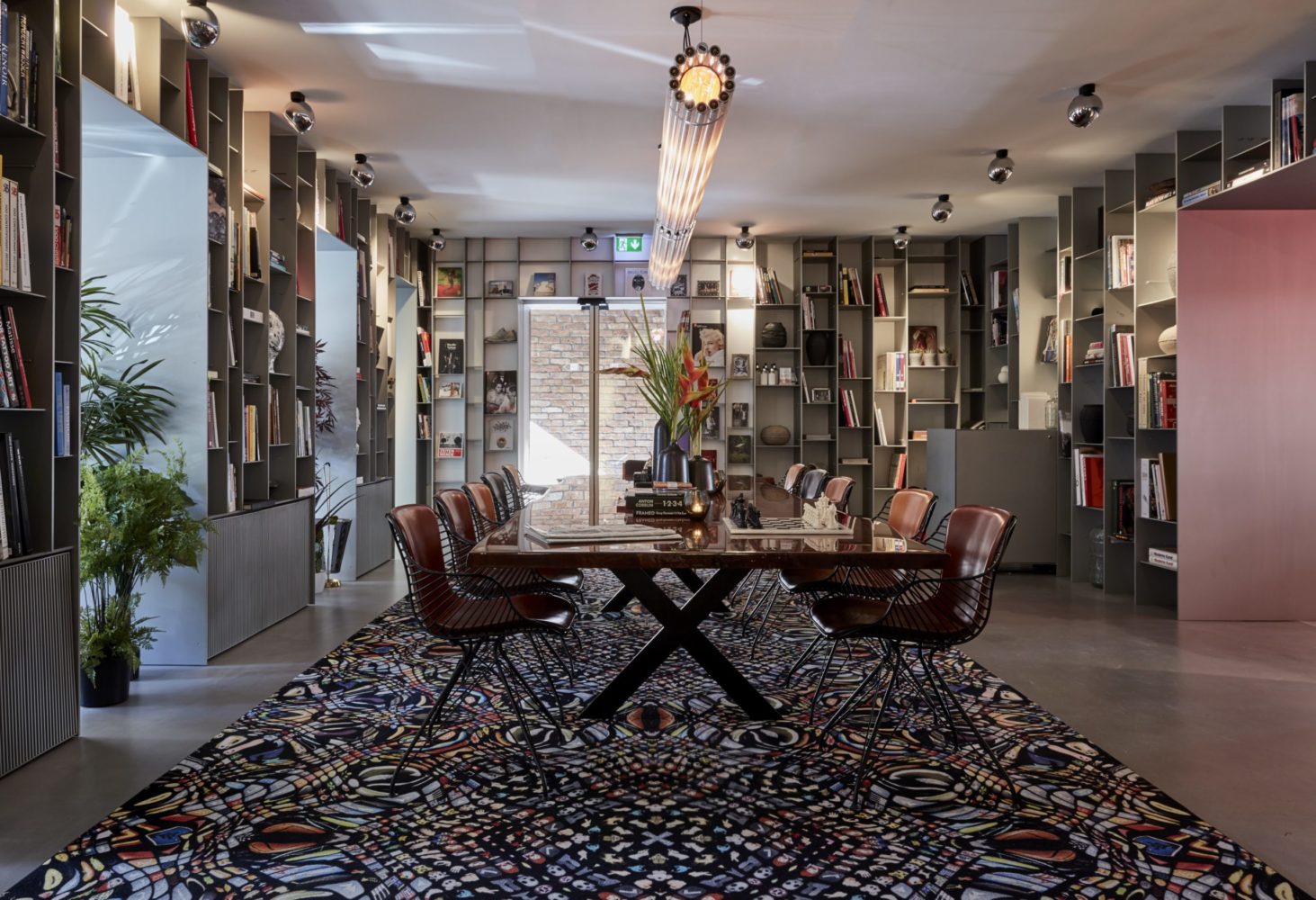
Photo by Steve Herud, courtesy of The Sir Savigny Hotel Berlin.
WW: What interests you in the medium?
RF: There’s always been an interest and I’ve spent a great amount of time working in the medium, basically since I was in high school. The material is very complex; you can approach it in a technical way or freely. Both approaches can produce great results and I definitely switch back and forth from the two.
The material has the ability to record touch and hold almost any form. The objects I create feel like only I could have created them. They’re unique to me because of the way the material records and stores touch. Ceramics is a material that has been used greatly throughout time by many different cultures and aside from being fragile, it has the ability to keep a record far beyond a lifetime. I like that aspect and that everyone in some way has a connection or can learn from the histories the material holds.
The second stage, glazing is a surface treatment that I truly believe cannot be replicated. It creates a great level of depth in color and its textural variation can only be created by glazing. There is always a level of uncertainty while working in ceramics because of all the steps and factors that go into the process, this has always held my interest. The material and the firing process have the ability to do things with color and texture that are beyond intended or imaginable. It is as seductive as it is unpredictable.
WW: The exhibition also includes photography. How was that incorporated into your tactile artmaking process?
RF: The mural spaces or photography portions were thought of as window spaces. So, there were specific scenes created with colored backgrounds and lights. These were influenced more by commercial window displays you could see throughout Fifth Avenue, specifically the artist Gene Moore. That is where part of the title comes from, “An upside-down love letter.” It’s a tactic he developed to draw in the viewer, a way of enticing them through the intrigue of the placements of objects.
I liked this idea and thought of the arrangements of Juan Sanchez Cotan, how both artists allowed the arrangements and environment created around the object to leave the viewer in a space of compilation. Rather than just viewing the object, you think and read into the relationships they create.
Most of the objects I create are fruit objects, they’re of scale, something you could hold in your hand so there is a level of intimacy. Because of the smaller scale, there are some elements that are overlooked. The great thing about the mural spaces is that the objects were enlarged to fit in the scale of mural spaces. The tactile elements of the surface are greatly emphasized and it allows for the objects to be experienced in a new way. Every brushstroke is exposed along with the movement and flow of the layers of glaze over the surface of the forms. There is definitely a new perspective created.
WW: How did the COVID-19 crisis impact the production and/or concept for this exhibition?
RF: The concepts were very much developed by the time the pandemic hit. COVID-19 delayed the show as the original installation was supposed to happen on April 5. All, if not most of the physical work was produced before the shutdown came into place. It was just left there sitting and waiting to be put together.
I had decided to take a break from the studio also at that time. Friends were nice enough to let myself and my partner stay at their home in Hudson, NY during the beginning of the pandemic. There was a studio and a backyard so I was able to self-quarantine and just work on the remaining parts of the project. It was lovely to work outside and was a needed break from the intensity leading up to the shutdown.
I went back to my studio eventually; it’s a private studio but in a building with some shared spaces so I took the necessary precautions. There were definitely issues and intense moments of stress but once you look back at something you mainly just focus on the good aspects.
I’m really grateful as I’ve remained healthy throughout the pandemic and will continue in the practices asked to protect myself and others. I think back to right before the pandemic hit—I was working well into the night, barely sleeping and pushing myself to the max. Things were so unclear and we were learning new things about COVID-19 every day. I was focused and felt like I was racing the clock, then everything stopped and there was a huge pause. A very memorable and unique situation to make artwork in. I’m glad I had the show on the horizon and it’s so awesome I was given such a great opportunity to share my work.
WW: How do you hope viewers will experience this exhibition—in-person? Online?
RF: I would simply say I hope viewers experience the work. This is a very unique and new situation which is going to last for some time. Everyone is thinking of ways to offer a viewing experience similar to in-person online, along with making the in-person viewing experience the safest possible. There were incredible photos taken of the exhibit and Art Production Fund’s social media platform and website are very active and can offer you a great insight into the exhibit. The Rockefeller campus offers you a very safe experience so the options are there so that everyone can experience the show.





